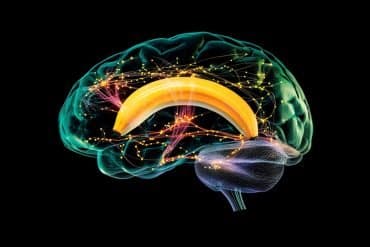Summary: Researchers have identified a novel coupling mechanism that links neural networks in the human brain.
Source: University of Helsinki
In a new study published in Nature Communications, research groups of Professor J. Matias Palva and Research Director Satu Palva at the Neuroscience Centre of the University of Helsinki and Aalto University, in collaboration with the University of Glasgow and the University of Genoa, have identified a novel coupling mechanism linking neuronal networks by using human intracerebral recordings.
Neuronal oscillations are an essential part of the functioning of the human brain. They regulate the communication between neural networks and the processing of information carried out by the brain by pacing neuronal groups and synchronising brain regions.
High-frequency oscillations with frequencies over 100 Hertz are known to indicate the activity of small neuronal populations. However, up to now, they have been considered to be exclusively a local phenomenon.
The findings of the European research project demonstrate that also high-frequency oscillations over 100 Hertz synchronize across several brain regions. This important finding reveals that strictly-timed communication between brain regions can be achieved by high-frequency oscillations.

The researchers observed that high-frequency oscillations were synchronised between neuronal groups with a similar architecture of brain structures across subjects, but occurring in individual frequency bands. Carrying out a visual task resulted in the synchronisation of high-frequency oscillations in the specific brain regions responsible for the task execution.
These observations suggest that high-frequency oscillations convey within the brain ‘information packages’ from one small neuronal group to another.
The discovery of high-frequency oscillations synchronised between brain regions is the first evidence of the transmission and reception of such information packages in a context broader than individual locations in the brain. The finding also helps to understand how the healthy brain processes information and how this processing is altered in brain diseases.
About this neuroscience research news
Source: University of Helsinki
Contact: Matias Palva – University of Helsinki
Image: The image is in the public domain
Original Research: Open access.
“Long-range phase synchronization of high-frequency oscillations in human cortex” by G. Arnulfo, S. H. Wang, V. Myrov, B. Toselli, J. Hirvonen, M. M. Fato, L. Nobili, F. Cardinale, A. Rubino, A. Zhigalov, S. Palva & J. M. Palva. Nature Communications
Abstract
Long-range phase synchronization of high-frequency oscillations in human cortex
Inter-areal synchronization of neuronal oscillations at frequencies below ~100 Hz is a pervasive feature of neuronal activity and is thought to regulate communication in neuronal circuits. In contrast, faster activities and oscillations have been considered to be largely local-circuit-level phenomena without large-scale synchronization between brain regions. We show, using human intracerebral recordings, that 100–400 Hz high-frequency oscillations (HFOs) may be synchronized between widely distributed brain regions. HFO synchronization expresses individual frequency peaks and exhibits reliable connectivity patterns that show stable community structuring. HFO synchronization is also characterized by a laminar profile opposite to that of lower frequencies. Importantly, HFO synchronization is both transiently enhanced and suppressed in separate frequency bands during a response-inhibition task. These findings show that HFO synchronization constitutes a functionally significant form of neuronal spike-timing relationships in brain activity and thus a mesoscopic indication of neuronal communication per se.






